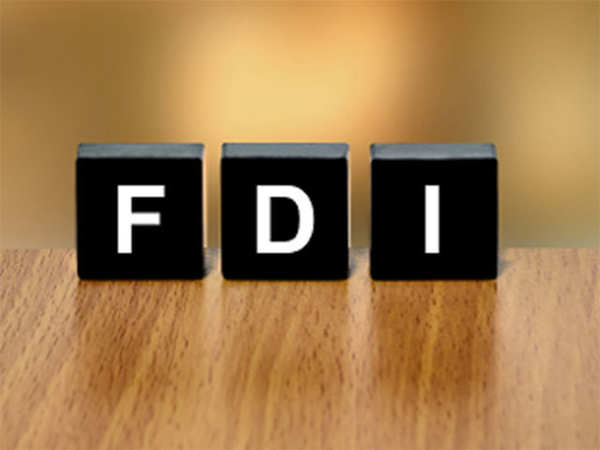After scaling an all-time high in FY22 and a sudden post-pandemic turnaround, foreign direct investment (FDI) inflows into the country have slowed in the current fiscal year, in sync with the global sluggishness in long-term cross-border investments.
Analysts feel FDI volumes may remain rather subdued in the next fiscal also, given the global growth slump, but India could still be among the better performers on a relative basis.
Gross FDI inflows – equity, reinvested earnings and other capital – declined 8.4% on year to $55.3 billion in April-December this fiscal. The decline was ever sharper in the case of FDI inflows as equity – these fell 15% to $36.75 billion during the first three quarters of 2022-23, according to official data.
While services sector registered a 24.5% increase in FDI equity inflows in the period, other sectors such as computer software and hardware, automobiles and construction too witnessed substantial declines (see chart).
Experts point out that global uncertainty over growth and inflation as well as tightening of liquidity conditions has made investors more cautious. However, India’s focus on production of new goods such as semi conductors and mobiles as well as the PLI schemes could lead to some revival in these investments, they feel.
“FDI inflows in 2022-23 have been affected by the recessionary trends in the major source countries of FDI combined with high inflation rates forcing the central banks to adopt tight money policies leading to rising interest rates. As a result, the full potential of FDI inflows is currently held back by a rather uncertain global economic environment with the threat of recession looming large on the US economy, one of the largest sources of FDI for India, directly or indirectly through Mauritius,” said Nagesh Kumar, Director, Institute for Studies in Industrial Development.
The EU countries have been affected very badly by the Ukraine war and the East Asian countries are still grappling with the pandemic, he further noted.
FDI inflows across the world have declined in 2022, after an initial spurt in the first quarter, according to UNCTAD. India, according to UNCTAD, ‘was the rare exception to the overall gloomy trend, with a doubling of new greenfield project announcements and a 34% increase in international project finance deals.’
Kumar said these will get reflected in the magnitudes of FDI inflows with a lag.
NR Bhanumurthy, vice-chancellor, BR Ambedkar School of Economics University agreed and pointed out that the tightening of global liquidity conditions and uncertainty over growth and inflation have impacted FDI flows globally, which has seen a decline.
Also read: Dividends from CPSEs may fetch govt Rs 55k cr
“However, India seems to be doing better than other emerging markets. India is also being mentioned as a bright spot in the global economy,” he said, adding that this trend is likely to continue even going forward as we are in the middle of an interest rate tightening cycle globally. India will continue to attract more FDI equity inflows compared to peers but the absolute volume will remain to be low.
Nischal S Arora, Partner – Regulatory, Nangia Andersen India noted that one notable exception has been the services sector which includes BFSI, wherein there has been an uptick. However, a noticeable decline is now visible in the computers, hardware and software sector where the overall decline in FDI over a period of four years now stands at a decline of 26% CAGR.
According to him, the auto sector is going through a cooling off period from an investment perspective as the industry prepares to ramp up investment to meet PLI targets and meet EV demand. Similarly, construction development has been directly impacted by US rate hikes as a dearer dollar has made fund availability and consequent allocation in developing markets difficult, he noted.
However, there is expectation that FDI equity inflows will improve in 2023-24 as the PLI schemes take off. “The recent developments such as PLI, strategy of global corporations to diversify their value chains on a China+1 basis, and friend-shoring, and India’s emergence as the fastest-growing large economy globally should help to enhance India’s attractiveness for FDI further in the coming years,” Kumar said.
Experts are also optimistic after recent big-ticket announcements such as the investment plan unveiled by Foxconn Technology Group to manufacture semiconductor chips and displays in partnership with Vedanta. The government too has been hopeful that the PLI scheme as well as other announcements made in the Union Budget will help attract more foreign investments into the country.
India recorded highest ever annual FDI inflow of $83.57 billion in 2021-22. India’s FDI inflows increased 20-fold since 2003-04, when the inflows were $4.3 billion.
https://www.financialexpress.com/economy/fdi-equity-inflows-hit-by-global-slump/3004060/





